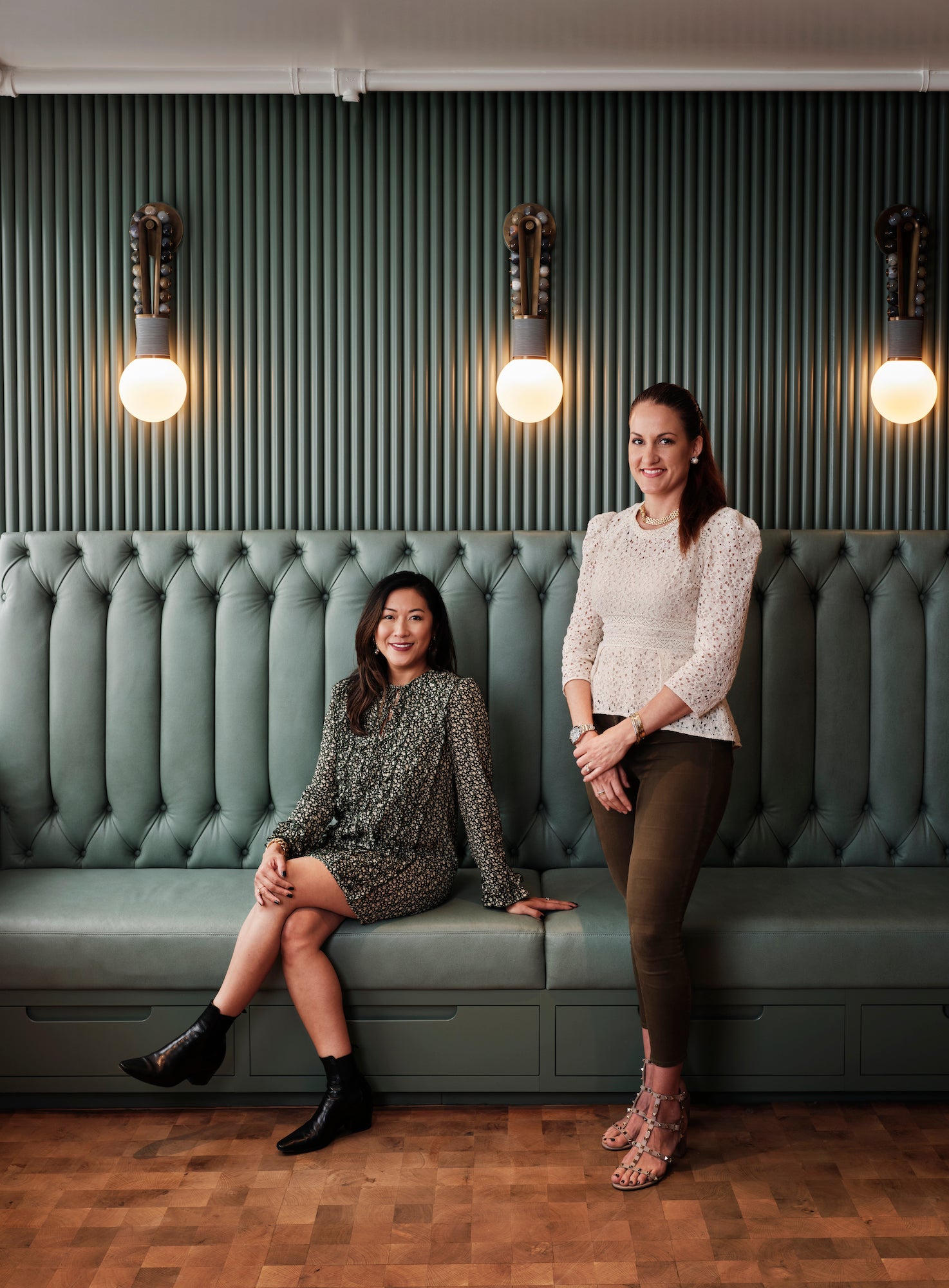As Trade Tales enters its third season, we’re trying something new: For the next six months, the show will feature stories of business pivots—large or small—that fundamentally transformed a firm. This week, the show features two designers working in a deeply intertwined partnership who realized that they needed to unwind their working relationship in order to truly grow.
Even though Eva Bradley and Alicia Cheung Lichtenstein grew up halfway across the globe from each other, their beginnings in design were not so far apart. In Switzerland, the white-walled aesthetics of Bradley’s home country inspired her to imagine new creative possibilities for her spaces—though when she relocated to New York to study design, she packed soft Swiss bedding and candles to re-create a sense of home. Meanwhile, in California, Cheung Lichtenstein was also taking control over her childhood home, sponge-painting every piece of furniture in her bedroom to match her newly sponge-painted walls. After a brief career in the fashion industry, she returned to school to study design. Eventually, the pair’s paths converged in San Francisco, where they both worked for Ken Fulk. The two became fast friends, both fostering ambitions of someday striking out on their own. By 2015, the path forward became clear—why not do it together?
“Once we decided on trying it on our own, we put everything into it to give it that real shot,” Bradley tells host Kaitlin Petersen on the latest episode of the Trade Tales podcast. “There’s a short window where you either have to take that leap, or you’ll never take it.”
That same year, the two quit the firm to start their own design business, Studio Heimat. Like many first-time entrepreneurs, they had humble beginnings: Their first office was a spare bedroom in Bradley’s house, where they worked at a shared desk. “That whole first year was just setting up the business,” says Cheung Lichtenstein. “It was like, ‘Where are we going to work? Do we need a printer? I guess we need a resale license. Nobody’s calling us, I guess we have to go to the showrooms and set up accounts with every single vendor and start from absolute zero.’”
Luckily, the nuts and bolts proved to be the hardest part of getting the business off the ground. The creative side of the partnership came naturally, and soon enough, they had a streamlined two-person design process. As the project inquiries kept coming in, it became clear that in order to keep growing the business, Bradley and Cheung Lichtenstein would need to hire a support staff—which meant externalizing processes, delegating some of the work and stepping away from certain day-to-day responsibilities. Still, they continued to operate largely in tandem. Then, when a pair of clients on a small project asked why they were being billed for two designers on every site visit, the duo realized they might need to take a step away from each other as well.
“We were each other’s security blanket,” says Cheung Lichtenstein. “We were like, OK, let’s try that on. How does that feel? If it’s uncomfortable, that might be a good thing.”
In this episode, they share how spending more time apart has loosened the firm’s bottleneck, along with how hiring a business adviser helped shift their mindset for growth, and why the whole office contributes to onboarding new team members.
Listen to the show below. If you like what you hear, subscribe on Apple Podcasts or Spotify. This episode was sponsored by High Point Market.
Homepage image: Frank Frances




























